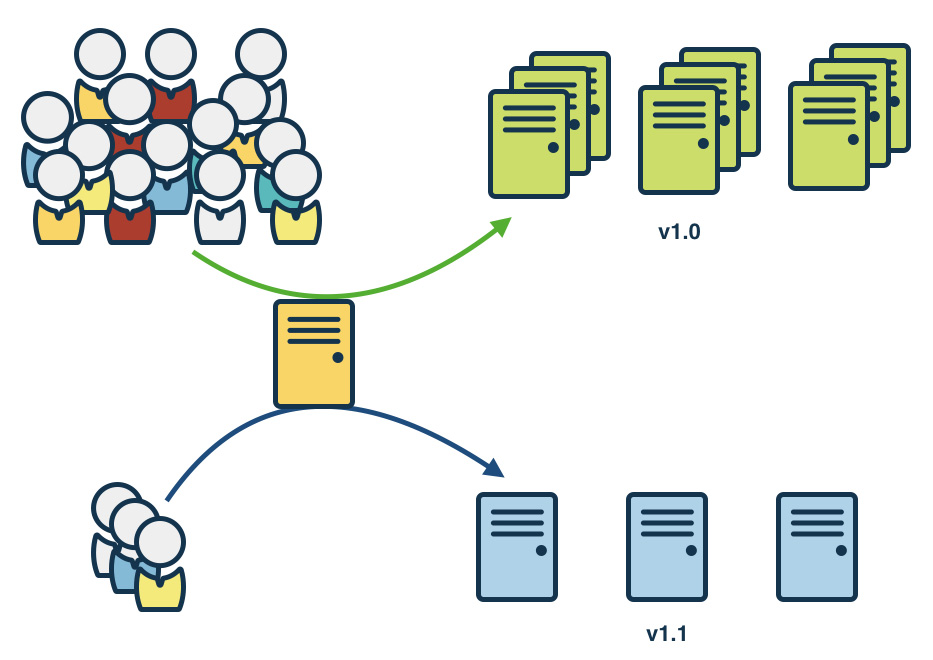In the previous article on Continuous Deployment Strategies, we explored techniques of performing blue/green deployments. In this post, we’ll cover how to perform Canary Releases. We know that
Canary releases are similar to blue/green, although only a small amount of the servers are upgraded. Then, using a cookie or similar, a fraction of users are directed to the new version.

Just like Blue/Green Deployments, one would start by deploying the application to a small subset of your servers. Once the subset of servers is deployed to, you may then route requests for a few users to the new set of servers.
This strategy lets you do a lot of interesting things, like:
- test the performance of the application
- perform A/B tests based on demographics and user profiles, for example “users between the ages of 20-25 living in Iowa”
- get feedback from a subset of beta testers or users from your company
As your confidence in the deployment improves, you can deploy your application to more and more servers, and route more users to the new servers.
If one or more versions of your application are running in production for some period of time, your application and its components (webservices, microservices, database) needs to be backward-compatible so that it works with at least one or two previous versions of your application. Parallel-Change Pattern can be an effective way to implement backward-incompatible changes between application interfaces.
Summary
In this blog series, we’ve looked at concepts like Phoenix Servers, Blue/Green Deployments and Canary Releases to help with effective continuous deployment. If you have any feedback or would like to hear about other continuous deployment strategies, leave a comment below.
This article was first published on the SnapCI Blog.

